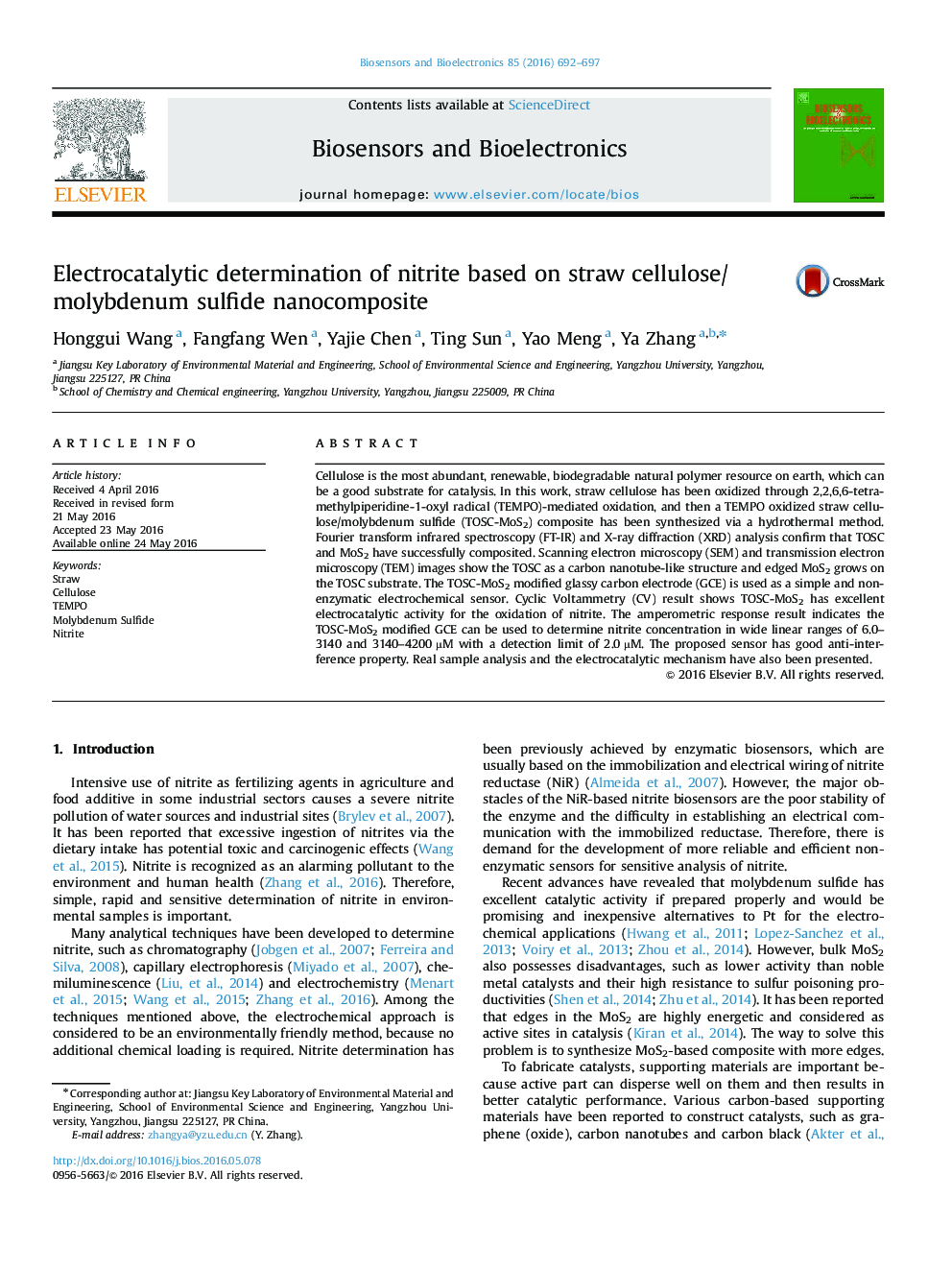| Article ID | Journal | Published Year | Pages | File Type |
|---|---|---|---|---|
| 7230467 | Biosensors and Bioelectronics | 2016 | 6 Pages |
Abstract
Cellulose is the most abundant, renewable, biodegradable natural polymer resource on earth, which can be a good substrate for catalysis. In this work, straw cellulose has been oxidized through 2,2,6,6-tetramethylpiperidine-1-oxyl radical (TEMPO)-mediated oxidation, and then a TEMPO oxidized straw cellulose/molybdenum sulfide (TOSC-MoS2) composite has been synthesized via a hydrothermal method. Fourier transform infrared spectroscopy (FT-IR) and X-ray diffraction (XRD) analysis confirm that TOSC and MoS2 have successfully composited. Scanning electron microscopy (SEM) and transmission electron microscopy (TEM) images show the TOSC as a carbon nanotube-like structure and edged MoS2 grows on the TOSC substrate. The TOSC-MoS2 modified glassy carbon electrode (GCE) is used as a simple and non-enzymatic electrochemical sensor. Cyclic Voltammetry (CV) result shows TOSC-MoS2 has excellent electrocatalytic activity for the oxidation of nitrite. The amperometric response result indicates the TOSC-MoS2 modified GCE can be used to determine nitrite concentration in wide linear ranges of 6.0-3140 and 3140-4200 µM with a detection limit of 2.0 µM. The proposed sensor has good anti-interference property. Real sample analysis and the electrocatalytic mechanism have also been presented.
Related Topics
Physical Sciences and Engineering
Chemistry
Analytical Chemistry
Authors
Honggui Wang, Fangfang Wen, Yajie Chen, Ting Sun, Yao Meng, Ya Zhang,
